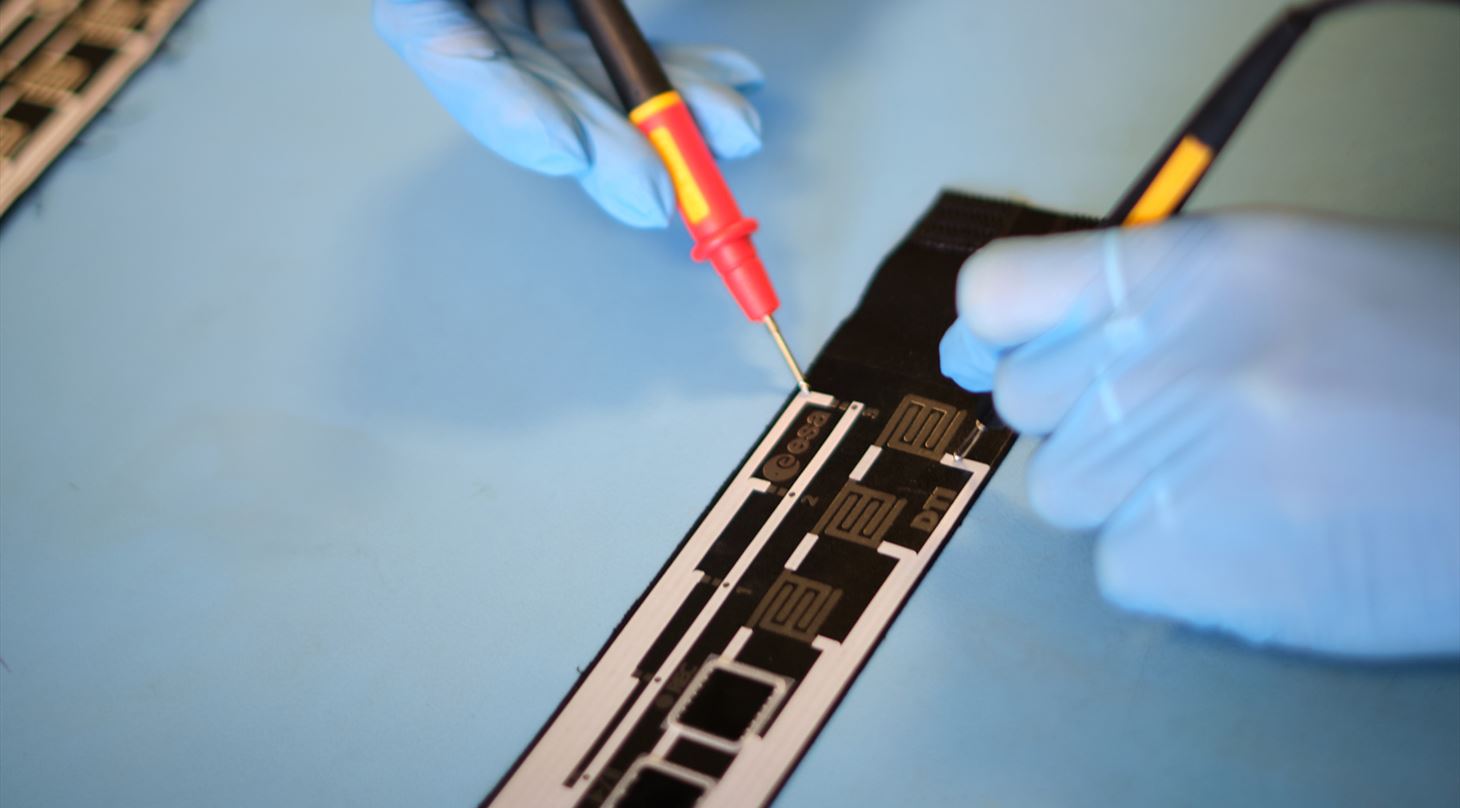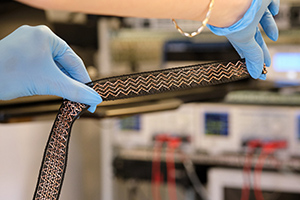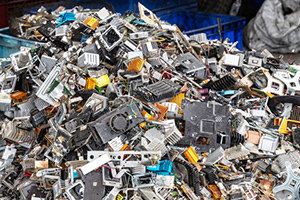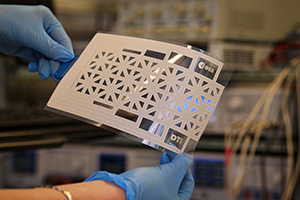
Smart Skin for Exploration Cobots - De-Risk Study for the European Space Agency, ESA
In collaboration with European partners, the Danish Technological Institute is developing a smart skin designed for robots operating in harsh environments.
Robots already play a pivotal role in exploration missions, and astronauts will increasingly have robots as colleagues in space. This necessitates that robots are safe to work with and that, like astronauts, they are protected from the harsh environment of space, including vacuum conditions, extreme temperature fluctuations, dust, and the need for easier repair.
 Printed electronics and e-textiles are key enabling technologies for realization
Printed electronics and e-textiles are key enabling technologies for realization
The smart skin is an ‘garment’ that can be donned (worn) on a robot arm, providing several key features:
- Thermal Management: Incorporates both passive (insulation) and active thermal elements to regulate the temperature on the robot arm and around joints
- Power/Data Line Routing: Functions as a flexible external harness for routing power and data lines efficiently
- Dust Protection: Shields the robot arm from small debris and turbulent dust in the environment
- Collision and Impact Prevention: Offers protection and sensor features to enhance the robot arm's motion control system
- Integrated Human-Robot Interface (HRI): Allows an astronaut to interact easily with the robot control system, enhancing human-robot collaboration
Printed electronics and e-textile technologies are vital for the project's success, enabling features such as printed sensors and display interfaces, dust mitigation solutions, and textile power harnesses. Alongside our specialists in printed electronics and e-textiles, the project benefits from contributions from other competencies at the Danish Technological Institute, including robotics and industrial 3D printing.
Dual use in terrestrial environments
 The increasing demand for robotics in harsh terrestrial environments, such as dusty construction sites, sorting electronics waste or wet agricultural fields, as well as in remote areas with extreme temperatures, underscores the importance of specialized protective covers.
The increasing demand for robotics in harsh terrestrial environments, such as dusty construction sites, sorting electronics waste or wet agricultural fields, as well as in remote areas with extreme temperatures, underscores the importance of specialized protective covers.
The development of smart skin addresses fundamental challenges in printed electronics that can benefit various smart applications, including smart devices and large-area technical textiles. These challenges include:
- High-speed data transmission with printed tracks.
- Shielded wiring for enhanced utilization of printed electronics.
- Large-area sensors and flexible keypads.
- Power and data buses integrated into flexible and stretchable fabric materials.
- Advanced surface treatment techniques.
- Enhanced testing capabilities for smart wearables.
 Bringing space development to ground level
Bringing space development to ground level
Space exploration is a rapidly evolving field with immense potential for innovation and advancement in Denmark and abroad. By actively engaging in space development, DTI supports growth of the emerging space industry domestically and internationally. Simultaneously, we tackle overall challenges, especially in developing lighter and more robust electronics.